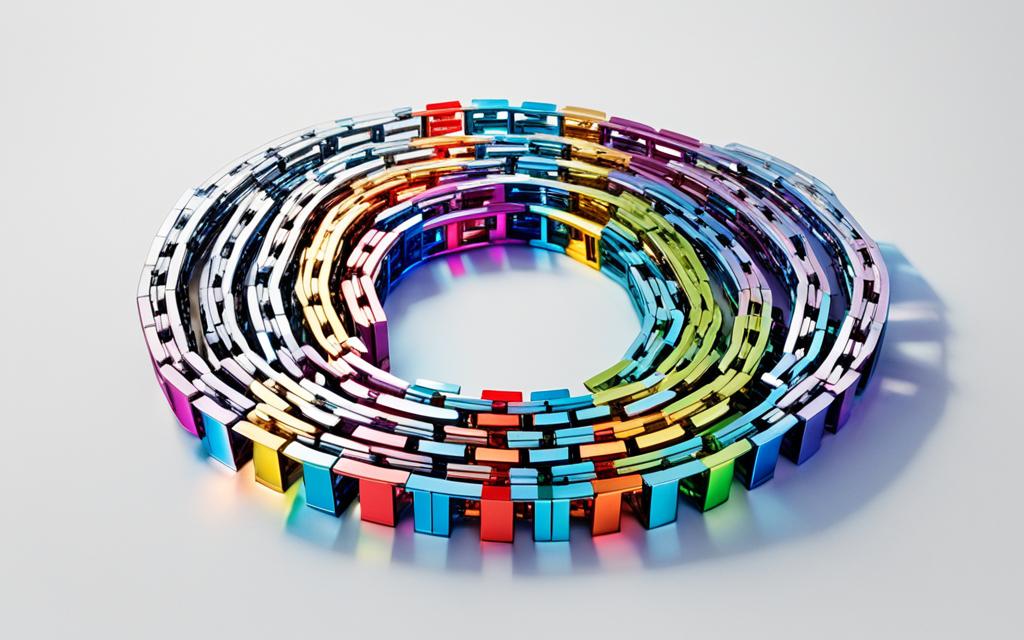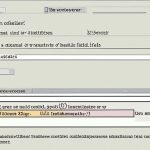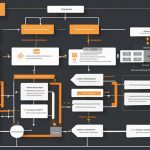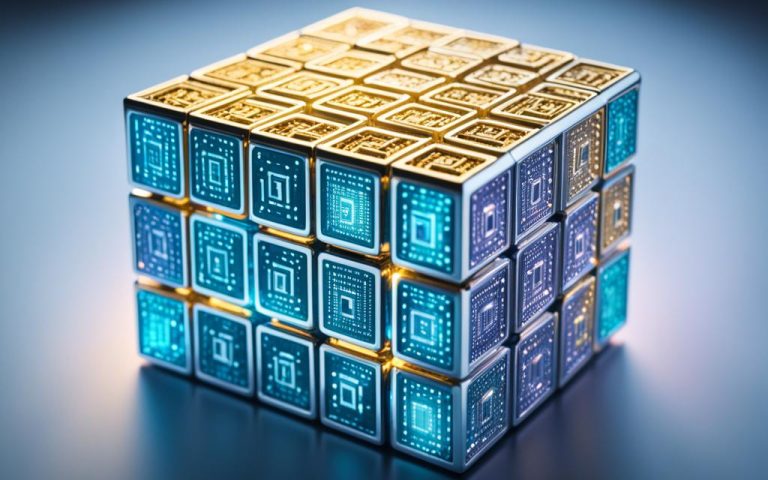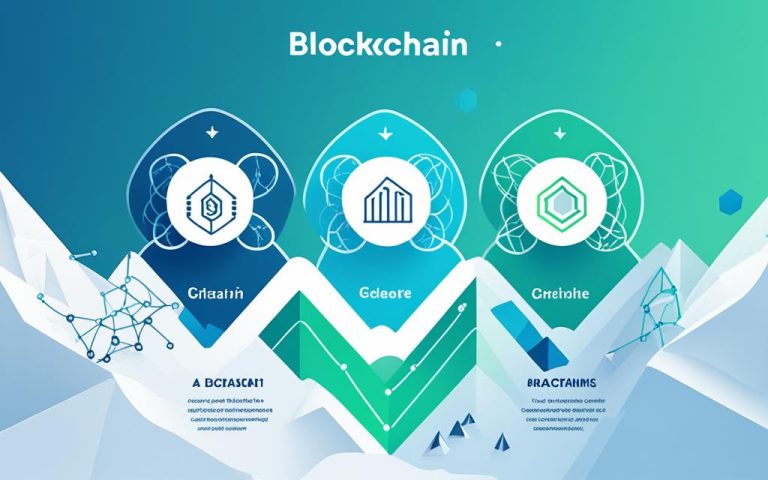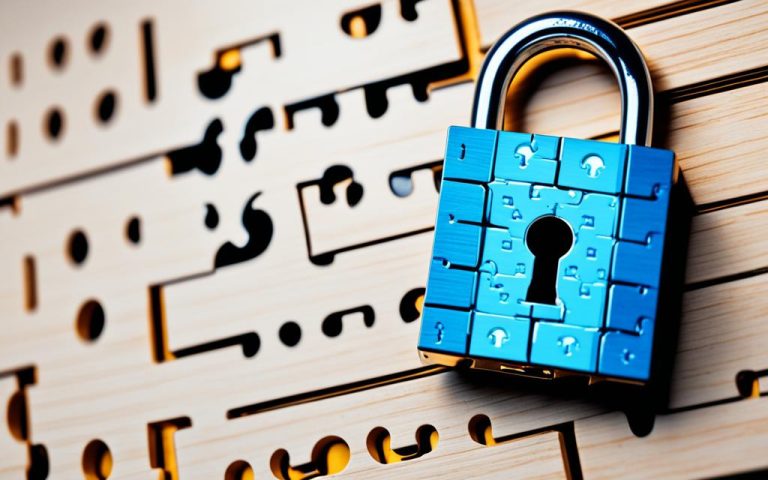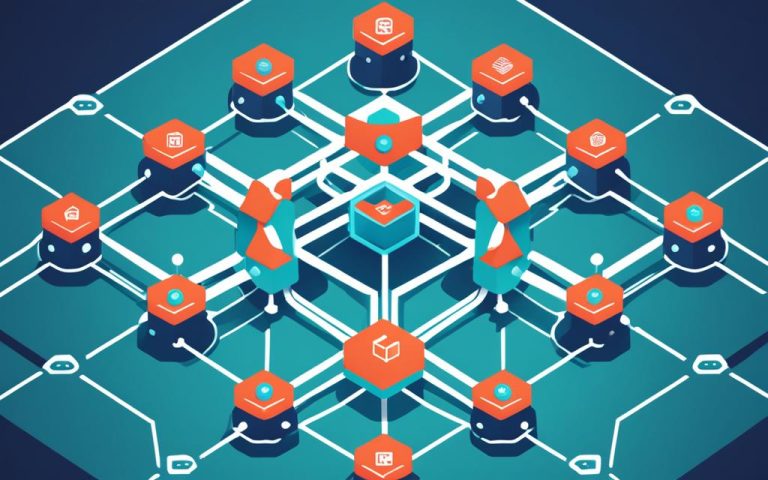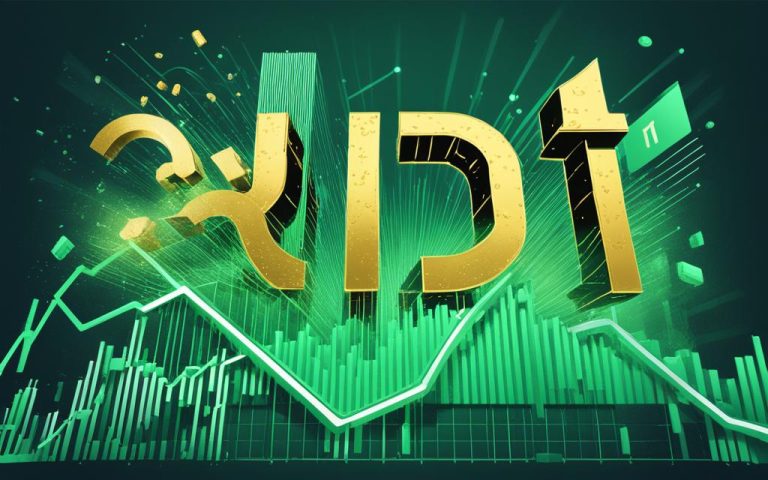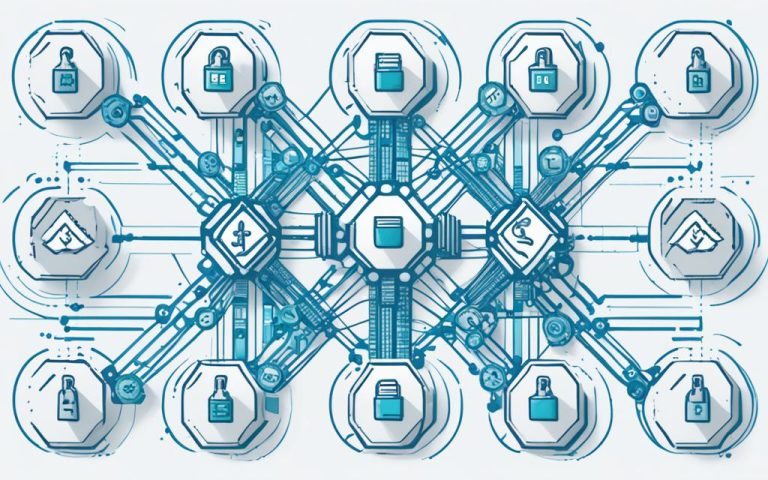Creating your own blockchain involves a few steps. First, learn about blockchain basics and programming languages like Go, Java, or C/C++. You will need to create a block, fill it with data, then hash and chain the blocks. A network, knowledge of cryptography, and understanding decentralized systems are also essential. With these in place, you can begin building your blockchain prototype.
Let’s explore the blockchain world more. Understanding its core principles is our goal.
Understanding Blockchain Technology
Before diving into blockchain, it’s important to understand what it is. Blockchain is a secure way of recording information. It prevents the data from being hacked or changed. Industries find this technology transformative.
At its heart, blockchain is a ledger spread across many computers, or nodes. This setup gets rid of the need for a central authority. It makes record-keeping open, clear, and hard to alter.
Transactions on a blockchain are stored in blocks and linked in order. Each block has a header, transaction details, and a unique hash for checks. This setup keeps the transactions trustworthy and unchangeable.
Blockchain’s security is a major plus. It uses digital signatures to confirm each transaction. This level of security is why it’s used in finance, supply chains, healthcare, and real estate.
Blockchain also has other pluses. It can automate actions and payments when conditions are met. Its decentralized nature means users agree on transactions, making them quick, safe, and easy. Plus, its transparency and permanence improve data trust and safety.
To know more about blockchain, check out Simplilearn’s tutorial, Investopedia’s guide, or Forbes for insights on what blockchain is.
With this knowledge of blockchain technology, let’s learn how to create a blockchain from scratch next.
Steps to Create a Blockchain From Scratch
To start building a blockchain, you must follow several steps. Let’s dive into four essential steps:
1. Create a Block
The first step is to decide what goes into a block. Each block has two parts: a header and a body. The header has info like the time it was created and a unique ID. The body has the data you wish to store.
2. Add Data
After setting up the block, you fill it with data. This could be details of transactions, records, or any info you aim to keep in your blockchain.
3. Hash the Block
Next, you must secure the block by hashing it. This means applying a special method to create a unique hash. Think of the hash as a digital fingerprint. It’s essential for keeping the blockchain secure and unchangeable.
4. Chain the Blocks Together
The last step is linking all the blocks. Each block carries the hash of the one before it. This creates a chain that is the core of the blockchain. It makes sure that changing a block is noticeable.
To make your own blockchain, you need to know a lot about how blockchain works and coding languages like C/C++, Go, Java, or Python.
If you’re new to making blockchains, consider starting with ready-made platforms like Ethereum or Hyperledger Fabric. They give you a strong base for creating distributed apps, altcoins, and unique tokens.
Now, let’s look closer at how blockchain tech is used in different fields.
Industries Utilizing Blockchain Technology
| Industry | Applications |
|---|---|
| Finance and Banking | Payment and remittance systems, cross-border transactions, trade finance, smart contracts, identity verification |
| Supply Chain and Logistics | Product tracking, provenance verification, inventory management, reducing paperwork |
| Healthcare | Secure medical record sharing, drug traceability, clinical trials management, patient consent management |
| Real Estate | Property title management, streamlining transactions, tokenization of assets, smart contracts for agreements |
| Government and Public Sector | Voting systems, identity management, land registry, public fund management |
| Retail and E-commerce | Loyalty programs, supply chain transparency, counterfeit prevention, ethical sourcing |
| Energy and Utilities | Peer-to-peer energy trading, energy grid management, renewable energy tracking, compliance management |
| Insurance | Claims processing, fraud prevention, parametric insurance using smart contracts, identity verification |
| Education | Storing academic credentials, certification processes, managing intellectual property rights, distributing educational resources securely |
Blockchain technology is making big changes in many areas. By learning how to create a blockchain and its uses, you can unlock the potential of this cutting-edge technology.
Conclusion
Making your own blockchain is tough but fulfilling. By using this article’s steps, you learn more about blockchain technology. You also get to program your blockchain prototype.
Start with simple ideas. Then, collect everything you need. Follow a clear process to create blocks and add data. Don’t forget hashing and chaining. With hard work and knowledge, you can turn your dreams into a real blockchain.
FAQ
What is blockchain technology?
Blockchain technology is a way to keep data secure and decentralized. It works by linking blocks of data together with cryptography. Each block has its own unique code, known as a hash.
What are the benefits of blockchain technology?
Blockchain technology cuts out middlemen, making transactions direct. It creates a record that can’t be changed, ensuring transparency. This technology is also very secure and reliable. It’s being used in finance, supply chains, healthcare, and real estate.
How do I create a blockchain from scratch?
Starting a blockchain requires steps. First, decide the block’s structure and information. Next, add details like a header and body to the block. Then, use cryptography to secure the block. Finally, connect each block to the previous one.
Is creating a blockchain a challenging process?
Yes, making a blockchain is challenging but also rewarding. If you follow each step carefully and learn about blockchain, you can create a prototype.
What are the prerequisites for creating a blockchain?
Before starting a blockchain, you should understand its basics. You need knowledge of programming languages like Go, Java, or C/C++. You also need a network, understanding of cryptography, and decentralized systems.

